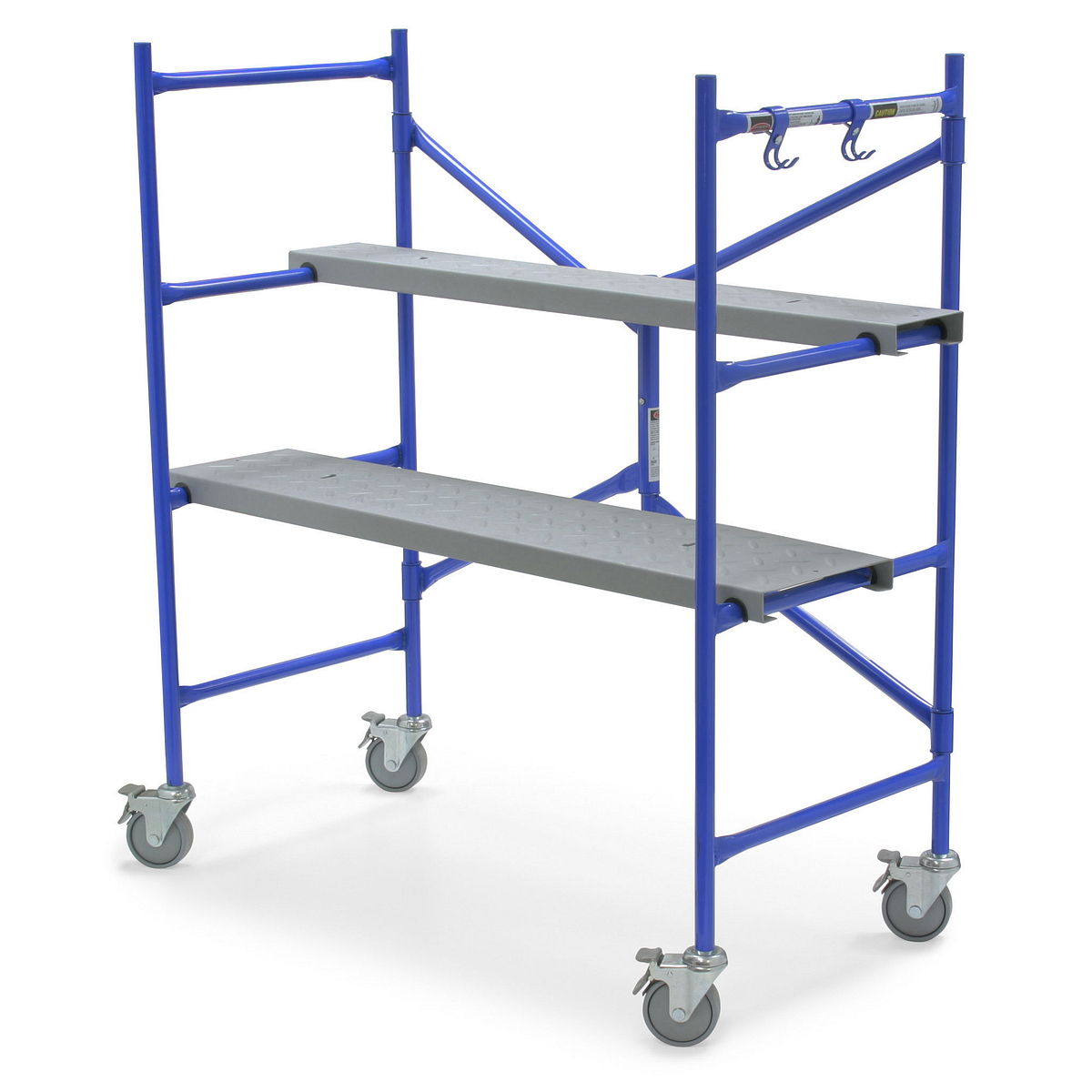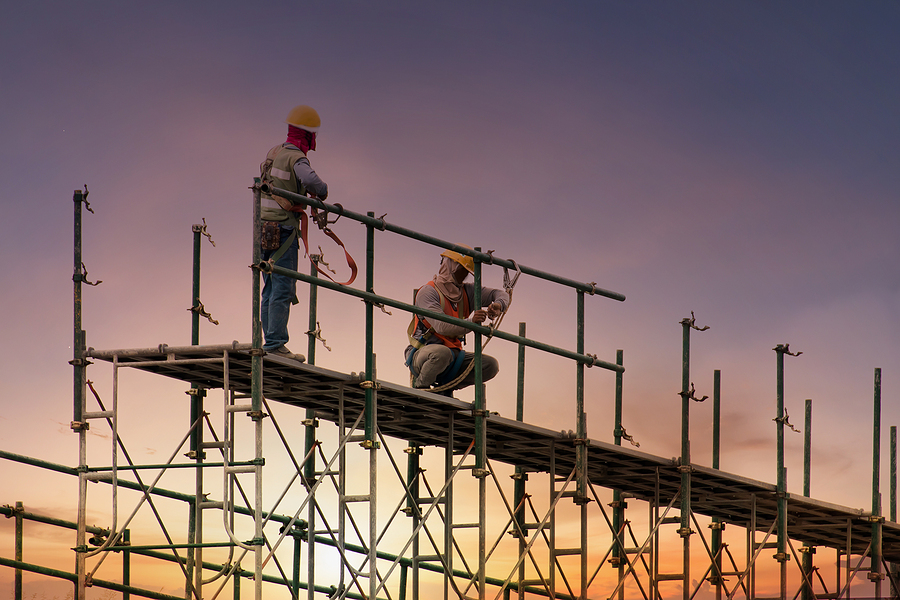Choosing a Local Scaffolding Company for Reliable and Timely Service
Choosing a Local Scaffolding Company for Reliable and Timely Service
Blog Article
A Comprehensive Guide to the Necessary Attributes of Scaffolding in Modern Building And Construction
The landscape of modern-day building and construction increasingly counts on effective scaffolding systems that prioritize advancement, security, and effectiveness. As jobs expand in complexity, understanding the vital features of scaffolding comes to be crucial for guaranteeing worker safety and security and maximizing task timelines.
Types of Scaffolding
Although scaffolding systems can differ widely in layout and application, they usually come under numerous distinct categories that accommodate various construction needs - Scaffolding. The most common kinds include sustained scaffolding, put on hold scaffolding, and rolling scaffolding
Sustained scaffolding consists of platforms sustained by a framework of posts, which give a elevated and stable working surface area. This type is typically used for tasks that need significant altitude, such as bricklaying or exterior painting.
Suspended scaffolding, conversely, is utilized for projects calling for accessibility to high altitudes, such as cleaning or repairing building exteriors. This system hangs from a roof or another framework, permitting employees to reduced or elevate the platform as required.
Moving scaffolding attributes wheels that enable easy wheelchair throughout a task site. It is particularly beneficial for jobs that require constant moving, such as interior job in large rooms.
Each kind of scaffolding is developed with details applications in mind, ensuring that building projects can be executed successfully and efficiently. Understanding these categories is critical for choosing the ideal scaffolding system to satisfy both job demands and website conditions.
Secret Safety Attributes
Safety and security is vital in scaffolding systems, as the possible dangers connected with operating at heights can cause major mishaps otherwise appropriately handled. Trick safety and security attributes are vital to guarantee the wellness of employees and the honesty of the building and construction site.
Primarily, guardrails are vital. These obstacles offer a physical guard against drops, substantially decreasing the danger of major injuries. Furthermore, toe boards are frequently made use of to avoid devices and materials from dropping off the scaffold, shielding workers listed below.
One more vital element is using non-slip surface areas on systems. This feature boosts grasp, particularly in negative weather condition conditions, therefore reducing the probability of slides and drops. Moreover, accessibility ladders ought to be firmly placed to assist in risk-free entry and departure from the scaffold.
Normal inspections and maintenance of scaffolding systems are also important. These assessments make sure that all parts are in excellent condition and functioning properly, resolving any kind of wear or damages without delay.
Last but not least, correct training for all workers involved in scaffolding operations is important to ensure that they understand safety methods and can identify prospective hazards. Scaffolding. Collectively, these attributes produce a safer working setting and significantly alleviate dangers related to scaffolding
Product Technologies
Advancements in material science have dramatically influenced the scaffolding market, improving both safety and security and effectiveness in modern building. The intro of high-strength steel and light weight aluminum alloys has reinvented conventional scaffolding systems. These products are not just lighter, making them much easier to assemble and deliver, however likewise supply remarkable load-bearing capacities. This leads to scaffolding structures that can support better weights while reducing the threat of collapse.
In addition, ingenious composite products, such as fiberglass-reinforced plastics, have actually become feasible alternatives. These materials are immune to deterioration and ecological destruction, thus prolonging the lifespan of scaffolding systems, specifically in harsh weather condition conditions. The usage of such materials contributes to lower upkeep expenses and makes sure consistent performance over time.


Style Considerations
Taking into consideration the intricacies of modern building jobs, effective scaffolding layout is paramount to guaranteeing both functionality and security. Layout considerations should incorporate different factors, consisting of tons capability, elevation, and the certain requirements of the building website. Each task provides unique difficulties, requiring an adaptable strategy to scaffolding systems that can adapt to differing problems.
Structural integrity is vital; consequently, engineers must determine the lots that the scaffolding will sustain, including employees, materials, and equipment. The selection of materials plays an essential function in ensuring the scaffolding can endure these lots while remaining resilient and light-weight. In addition, the design needs to enable very easy access and egress, helping with the smooth movement of materials and personnel.
Safety and security features, such as guardrails and non-slip surfaces, need to be integrated to reduce dangers of accidents. The design needs to consider the surrounding environment, consisting of possible risks and nearby frameworks. By attending to these design factors to consider, building and construction firms can improve the effectiveness of scaffolding systems and promote a safer working atmosphere, ultimately adding to the overall success of the task.
Upkeep and Inspections
The performance of scaffolding systems extends beyond first layout and application; ongoing maintenance and normal evaluations are vital to ensuring their proceeded performance and safety and security throughout the period of a task. Regular examinations ought to be carried out by qualified employees to recognize any signs of wear, damages, or instability that might jeopardize the stability of the scaffolding.
Maintenance protocols ought to include routine checks of architectural parts, such as planks, frames, and installations, guaranteeing that all components continue to be protected and cost-free from corrosion or various other damage. Additionally, the performance of safety and security attributes, such as guardrails and toe boards, should be examined to make certain conformity with safety and security guidelines.
Documentation of all inspections and upkeep activities is vital for responsibility and regulative conformity. A methodical approach to record-keeping not just help click reference in tracking the problem of the scaffolding however also supplies necessary proof in the occasion of an occurrence.
Eventually, developing an extensive upkeep and inspection routine will substantially lower the risk of crashes and enhance the overall safety and security of the building website. By prioritizing these methods, building and construction managers can safeguard employees and promote the project's stability.

Conclusion
To conclude, the important features of scaffolding in modern building encompass a range of crucial elements, consisting of varied kinds, vital security systems, material innovations, and thoughtful style factors to consider. Emphasizing safety and security via guardrails and non-slip surfaces, along with innovations in products like high-strength steel, improves both performance and sustainability. Routine maintenance and assessments are important for ensuring architectural honesty and safety on building and construction sites, inevitably helping with efficient task execution and advertising the well-being of employees.
The landscape of modern building progressively counts on reliable scaffolding systems that focus on effectiveness, development, and safety and security.Advancements in product science have actually dramatically affected the scaffolding sector, enhancing both safety and security and efficiency in modern-day construction. On the whole, these material advancements not just improve the efficiency and safety and security of scaffolding systems but likewise straighten with the sector's press in the direction of sustainability, as many contemporary materials are designed to be a lot more eco pleasant.
Considering the complexities scaffolding technique of contemporary construction projects, effective scaffolding design is vital to making sure both capability and safety.In conclusion, the vital functions of scaffolding in contemporary building include a variety of essential components, consisting of diverse types, essential security devices, material developments, and thoughtful design considerations.
Report this page